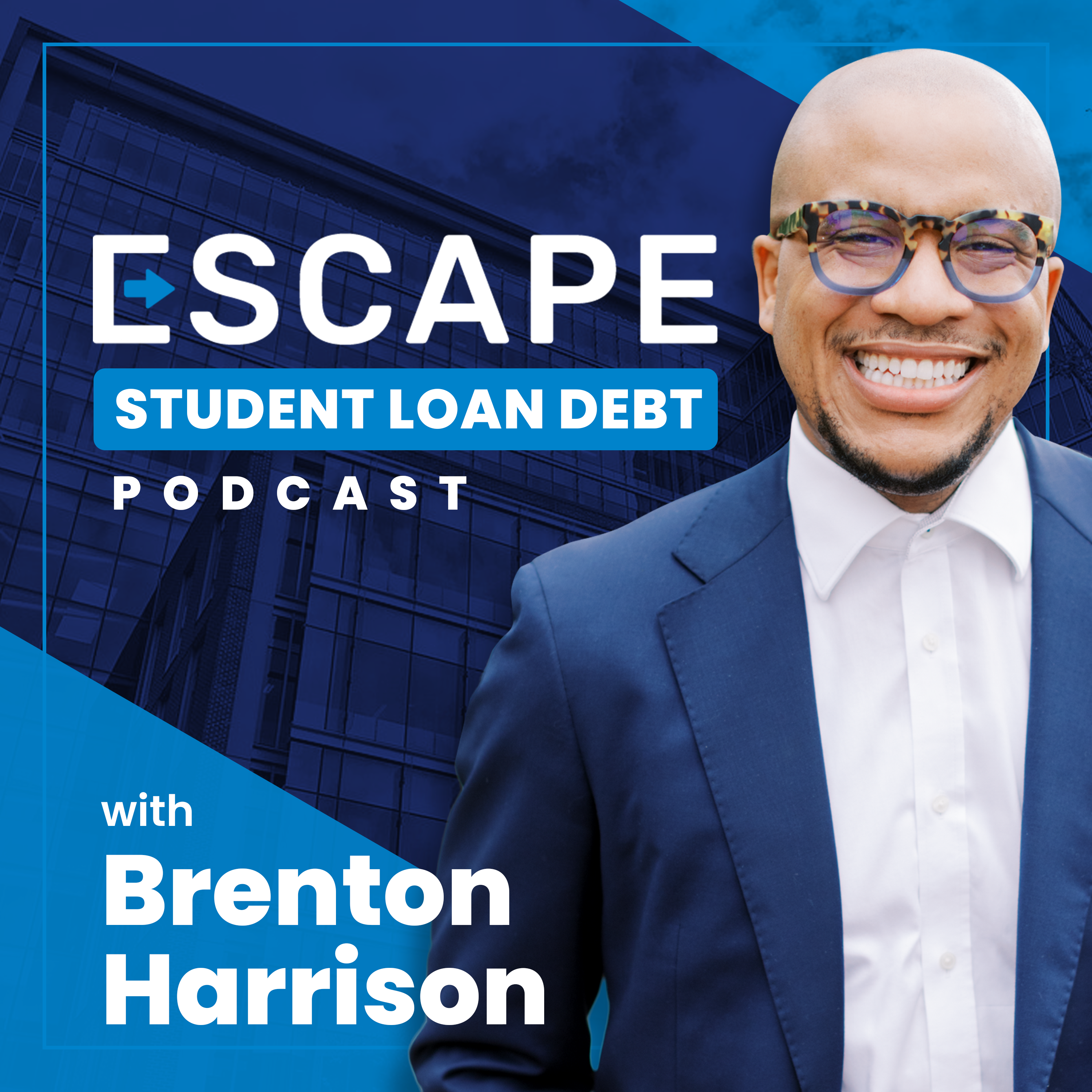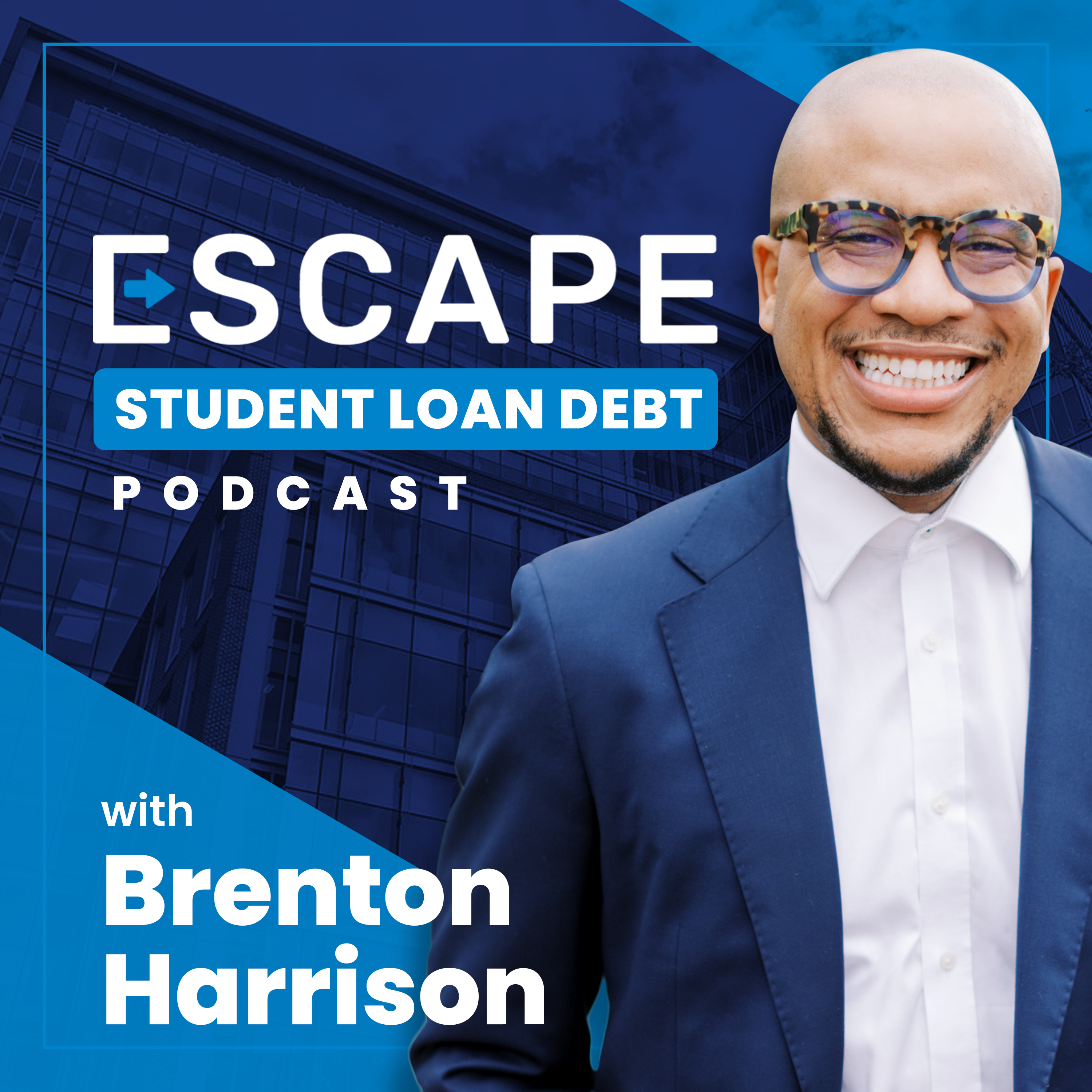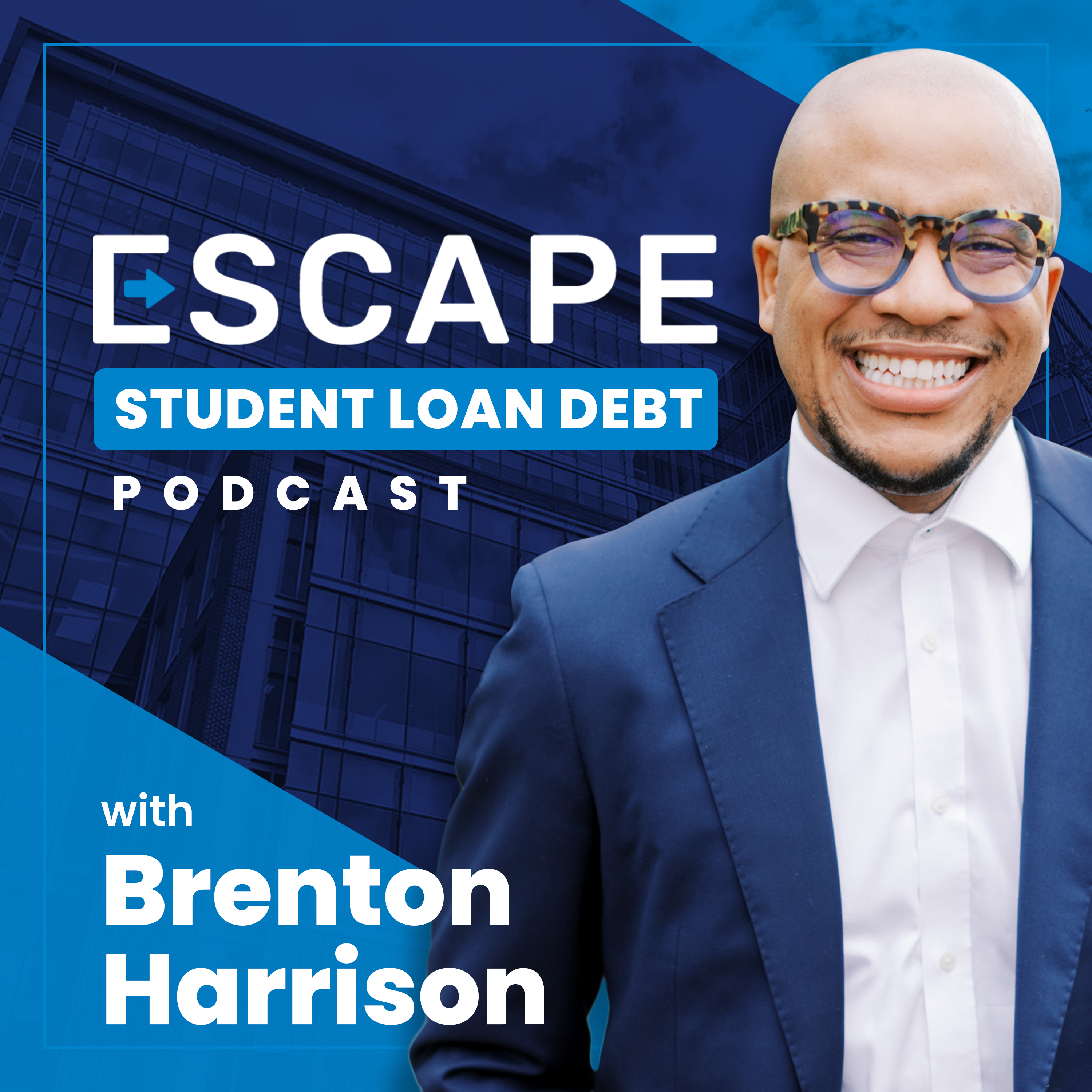Episode Transcript
[00:00:00] Speaker A: In this episode, we update you on recent news that impacts both your federal and private student loans. Let's get started.
[00:00:08] Speaker B: Are your student loan payments or loan balances a major obstacle in your financial life? Then tune in and let's escape student loan debt.
[00:00:19] Speaker A: Hello. My name is Brenton Harrison of Escape student Loan debt and your host for the Escape Student Loan debt podcast. Let's get into this week's episode, which is really just some quick updates. Three updates that I think will have an impact on both your federal and private student loans potentially open up some opportunities if you feel like you are hamstrung by either a high payment, a high interest rate, or if you're a little bit frustrated as to what's going on with the save plan for federal student loans, let's start with the first update, and that is an update related to the save plan. As a quick recap, the Save Plan is the most recently released income general repayment plan that promised a great number of things. If you had a payment that wasn't covering all of your your interest, it had a 100% interest subsidy. It lowered the payments even if you were paying the traditional 10% of discretionary income that you saw in many IDR plans. It lowered for undergraduate only borrowers that percentage to 5%. It increased the speed at which you could have your loans forgiven if you owed below a certain amount. Had all these features that have been tied up in the courts as republican led states have led a lawsuit, or actually to say, a number of lawsuits, that declared that the Department of Education essentially did not have the authority to have a plan that cost that much money without first having it approved by Congress. That has gone through several layers of the court when it comes to the court, the appellate courts, and so on and so forth. And the most recent update that we gave you was that that plan had been put on pause completely. They were not allowing anybody to sign up for the plan. People who were already signed up had their payments placed on pause. And unfortunately, during this period of administrative forbearance, there would be no credit that would be awarded towards either income generating repayment plan forgiveness or the forgiveness that's offered by public service loan forgiveness. So the Department of Education put that all the way up to the Supreme Court, not to say that the save plan should be approved, but to say that while they are deciding whether the save plan should be approved, they should lift the hole that it put a pause on that plan. So they're not saying to the Supreme Court that you should approve it. They're saying while you decide to, on your final ruling, lift this injunction so that we can take all these people out of limbo and give them credit towards things like forgiveness. Well, unfortunately, the Supreme Court rejected that request last Wednesday. They essentially declined the Department of Education's bid to lift that injunction, essentially telling the Department of Education that they will have to wait until their final ruling to decide the fate of the save plan. Now, in my opinion, this means that this forbearance that you've been placed into if you're on save, is going to last several more months. It's highly likely that they won't even even hear this challenge before the court until October, and then it could take several months before they issue a final ruling. So absent some happening that I just am not expecting, it is highly possible that we could go three, four, five months where you're in administrative forbearance, which would be good for your wallet if you were avoiding making student loan payments. But if you were aiming to get forgiveness as fast as possible, obviously not ideal. That's why in the most recent episode for escape student Loan Debt, we talked about the ability to do things like public service buyback. But if you are on an income driven repayment plan and you're not working in public service, then really you're just in a holding pattern. The good thing is you don't have to make payments. But the bad thing is you're not inching any closer to having your loans forgiven after the 20 or 25 years that's required by the IDR plans. So while that is a bit of an update letting you know the Supreme Court denied the challenge, it's not really much of a substantive actionable one. Because if you're in this situation before last week, you unfortunately remain in the same situation today. Now, depending on your level of frustration, there may be some things that you can do if you say, you know what? I just don't have the stomach to sit through what's going on with these federal student loans. What if something were to occur that would put me in a position where I'd consider refinancing those federal loans with a private entity? Well, if that is you, you may be in luck. We have talked about private loans less frequently on this podcast in the past, but we've shared that there's a number of things that impact the interest rate that you receive on a private student loan loan. It could be the dependability of your income. It could be the credit of not just yourself, but your co signer, the career in which you are employed, all of these different factors can impact your loan interest rate. But the biggest indicator of loan interest rates is what's going on in the general economy. So when I first started in this industry, loan interest rates were based off of something called the Libor. Now they're off of something called the SOFR index. But general economic interest rates have an impact on all of these different indices. And over the last couple of years, interest rates in this country have been very high. If you are looking on screen, you're looking at an article from Time magazine, and that article says, Jerome Powell says the time has come for the Fed to begin reducing interest rates. Jerome Powell is the chair of the Federal Reserve. And the Federal Reserve looks at economic data, jobs reports, to determine economic policy, and they adjust rates of interest accordingly to either encourage investment into the economy. Or if they feel like the economy is going a little too hot, they will increase interest rates to try to cool off some of the activity that you're seeing. And the good thing about this is the interest rates that the Fed controls, they are not directly what is used to calculate what you pay on a private student loan. But as I said, it would have an impact. So if you see private loan interest rates drop, it does open up the opportunity that we haven't had in a while where you could see a rate for a private loan that is more competitive than what you have with a federal lender. Now, obviously, there are a number of allowances and things that you have when you have federal student loans that you don't want to just willy nilly throw away. And we've talked about that in previous episodes. We've also talked about the fact that if you're in a camp where you're earning so much money and you owe so little comparatively, that it's either unlikely that you would get forgiveness at all, or if you receive forgiveness, it would be for a small amount. A lower interest rate with a private loan may actually put you in a position where you can pay a lesser or similar amount and pay off the loans in full in a faster period. So we'll put a link to the show notes for some of the episodes that we've done on private student loans and how to find your interest rate. But as a reminder, you can not only refinance a federal loan with a private lender, if you already have a private loan, you can refinance that loan with another private lender as many times as you want to without negatively impacting the loan itself. So we'll put a link to the episode where we talk through that process. But if you fall into this camp, be aware that for the first time in a couple of years, the opportunity could exist in the coming months where it's worth you at least checking what private interest rates may be.
[00:07:23] Speaker C: This is the escape Student Loan Debt.
[00:07:25] Speaker D: Podcast, a show for established professionals whose student loan payments or loan balances are impacting their marriage, their business, their credit, or their dream of achieving home ownership.
[00:07:36] Speaker C: We'll be right back.
[00:07:41] Speaker B: Are you interested in learning the tools and techniques we use to get student loans forgiven, reduced, reorganized, or expedited? Well, great news. We're currently updating our flagship course, escape student loan debt, to reflect the current changes in the student loan landscape. To stay up to date on the launch of the course and opportunities to sit in on our live recording sessions, head to escapestudentloanede.com and join our email list now.
[00:08:09] Speaker D: You'Re listening to the Escape Student Loan debt podcast.
[00:08:12] Speaker C: Subscribe now@escapestudentloanedeft.com.
[00:08:15] Speaker D: Dot welcome back.
[00:08:18] Speaker A: All right, let's bring this thing home with the last update of the day. And that update is, at least according to what they say, the payment counts for things like the income generation repayment plan waiver and the public service loan forgiveness waiver are supposedly completed. If you're looking online, I'm on a page at Studentaid Dot gov that talks about the income driven repayment plans and the credits that you receive towards forgiveness. And it says, and I quote, the US Department of Ed currently expects the payment count adjustment will be completed by September 1, 2024. When we implement the adjustment, it will automatically be applied to all direct loans and FFEL program loans that are managed by the Department of Education at that time. Now, we're definitely not going to go all the way through the income driven repayment plan waiver and the public service loan forgiveness waiver. There's been plenty of episodes we've done on that. But if you are applying for either program, you're aware that we have been waiting until the end of 2024 to get an accurate count as to the past credit that's been added on to your total by the Department of Education. And if you're applying under both programs, right, you want your credits for income driven repayment, but you also want your credits for public service loan forgiveness, then that is great news, because fortunately for PSLF hopefuls, you are in a position where there actually is a way to track the number of credits that you currently have on studentaid Dot gov Dot. One of the things that's happened in the last few months is the Department of Education has taken over the public service loan forgiveness process in terms of tracking payments from Moheela and Fed loan servicing prior to Mohilla Hela. So you now have a much more robust set of data on Studentaid dot gov that you can follow to see where your credit lies. If you're looking on screen, I actually have an example in front of you and we'll put this screenshot in the show notes. It shows you a person who has a direct consolidation unsubsidized loan owes about $245,000. But you can also see on this dashboard where in addition to the principal and interest, there's a category off to the right that says PSLF cumulative match months, two months. So this is the first time that you've been able, right on the dashboard to go to studentaid Dot gov and see on the homepage the credit that you have towards forgiveness. If you go even further down the dashboard, there's even a section on the homepage that gives you a more detailed breakdown. You can see it says PSLF payment progress. This person actually has two different loans and it shows their credit and progress towards the 120 months that are required before forgiveness. So this person is only 18 months away. Now, I happen to know that this person is on the save plan and still works for an eligible employer. So this is the type of person where if this administrative forbearance extends too long and had they received credit, they would have crested that 120 months. They should consider the public service loan forgiveness buyback credits like we talked about in previous episodes. Going back to the screen. When you look into the more detailed page that governs public service loan forgiveness credits, you can not only see the loan details, it will even show you month by month the payment history that you've accrued towards your 120. So you can see the payments that qualified and even go through months where maybe you don't have a payment that qualifies. It may not be that it's ineligible, it may be that you just haven't verified your employment during that period of time. And to that end, also on the homepage, it will show you the status of any certification forms that you submitted for public service loan forgiveness. So you can see that this person whose loans we're reviewing has actually submitted public service loan forgiveness forms for four different employers. There are two that have been completed and there are two that are listed as in review. So it's highly possible this person, who's at 102 months credit already could get those 18 credits they need to have their loans automatically forgiven as soon as these last two forms are completed. But this is a status update that it was a lot harder to get in the past. That is now something that you can do now. If your question is what if I'm not applying for public service loan forgiveness, I'm just applying for income driven repayment plan forgiveness. That's a lot more difficult because they do not yet. Their plan is to have at some point a similar tracker just for IDR forgiveness. But as for right now, it's just for public service loan forgiveness. So if you're trying to figure out about how much credit you have towards income driven repayment plan forgiveness, you unfortunately have to do some calculating on your own. But there are some places where you can get clues as to the number of credits you should receive. One of those places is by going to the loan status history, which can also be accessed through studentaid Dot gov, and it will show you the different payment statuses and the dates that you went into that status. For example, this person that we're reviewing went into repayment in August of 2019, but then they went into forbearance starting in March of 2020. You can track these loan statuses and the months in between to kind of get a feel for how much credit you could receive. And then also a more analog way of tracking the credits would be to download your student loan data file. We've also done an episode on how to download that file and review it in the past, so we'll link to that in the show notes. These are two of the options that you have to get a more up to date count on what you should receive as a result of the income driven repayment plan waiver. So those are three updates that, in my opinion, have a potentially large impact on both your federal and private student loans. And we will be back with more student loan news, tips, and tricks on getting your student loan balance forgiven, reduced, reorganized, or expedited in two weeks. See you then.
[00:14:04] Speaker B: From escape student loan debt this was the Escape Student Loan Debt podcast, a show for established professionals whose student loan payments or loan balances are impacting their marriage, their business, their credit, or their dream of achieving homeownership.


